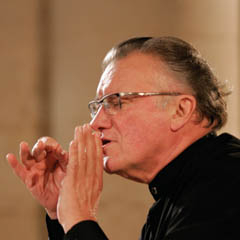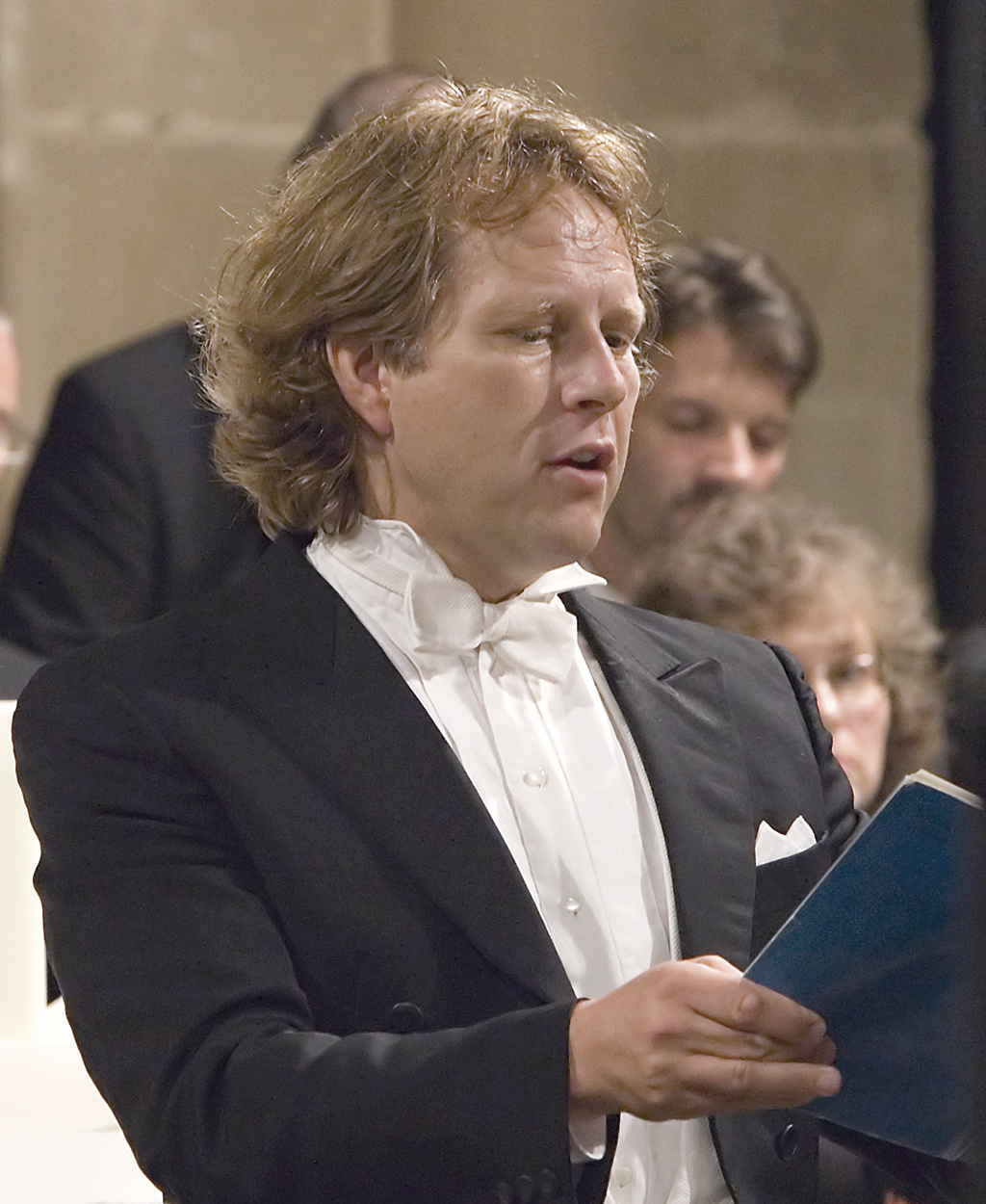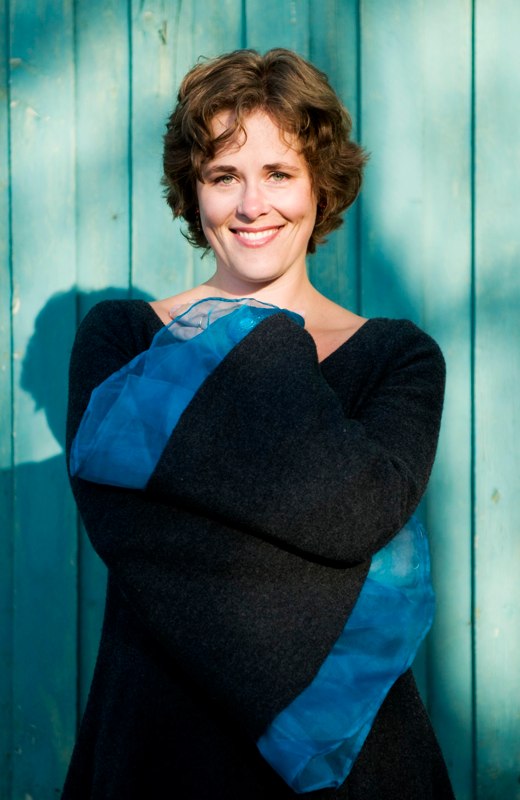St. Matthew Passion at Champs Elysees
St
. Matthew Passion opens Easter celebration at the Theatre des Champs Elyseeson Monday evening. It was a peaceful serious presentation. Talents Lyric and Arsys Bourgogne Choir, in addition 6 young girls from Childrens Choir de la Maitrise de Paris. Conducted by Pierre Cao.
Review by Henning Høholt
The St. Matthew Passion is a sacred oratorio from the Passions written by Johann Sebastian Bach in 1727 for solo voices, double choir and double orchestra, with libretto by Picander (Christian Friedrich Henrici). It sets chapters 26 and 27 of the Gospel of Matthew, (in the German translation of Martin Luther) to music, with interspersed chorales and arias. It is widely regarded as one of the masterpieces of classical sacred music, and is one of the very popular pieces to be played, not only around Easter, where the history actually is happening, but also through out all the year, often as a work for church concerts
.
Excellent performed with great musicality, where I particularly appreciated the conductor Pierre Cao´s calmness, where he gave each sections the opportunity to develop their musicianship in the major sections where the two orchestras and two choirs sang and played together, but also in the many beautiful arias, which in this passion will be performed in single instrumentation often with just continuo, – an organ, cello, bass, and either one or two flutes or oboes, or 1 violin or viola amore.
This gives a very nice feeling, when this is the basis for the performance of the dramatic story of Jesus from the last Sacrament, to the crucifixion, with all the known details of St. Matthew Gospel, mainly chapters 26 and 27.
The most famous of choir parts is “O Mensch, bewein deine Sunde gross” as is well known from St. John´s Passion, which also has an overall figure, but here in St. Matthew Passion hear it only 5-6 times. This is a ceremony in itself, suitable hostfor this type of works by Johann Sebastian Bach.
The narration of the Gospel texts are sung by the tenor Evangelist in secco recitative accompanied only by continuo. The brilliant cast was leaded by the outstanding Evangeliste Markus Schäfer, (tenor) which has a beautiful tenor, with a lot of deliciouous colours, which suited the different recitative parts very well. Jesus was sung by the basse Wilhelm Schwinghammer, which did it very well. The words of Jesus, also termed Vox Christi (voice of Christ), usually receive special treatment. Bach created particularly distinctive accompagnato recitatives in this work: they are accompanied not only by continuo but by the entire string section of the first orchestra using long, sustained notes and “highlighting” certain words, thus creating an effect often referred to as Jesus’s “halo”. But remakrable: Only his final words, written in Aramaic language: Eli, eli, lama sabachthani (My God, my God, why have you forsaken me?), are sung without this “halo”. In the revision of 1743–1746, it is also these words (the Vox Christi) that receive a sustained continuo part.
The outstanding Norwegian mezzosoprano Marianne Beate Kielland took very good care of all her parts, and in deed, some of the most beautiful soli is placed to the mezzo. The Aria (no 39). with the beautiful violin solo by the first violin: Erbarme dich, mein Gott, um meiner Zähren Willen! was a master piece and a beautiful violin tune. Sabine Goetz was this evenings soprano, unfortunately not all the time successfull with the intonation.The young tenor Simon Bode did an excellent job, his voice is very beautiful, and he has the talent of very good expression and a beuatiful sound. Markus Flaig was a good baryton. Furthermore there were five very good soloists from the choir taking good care of the minor, but importent, roles. These are named parts for Judas, Peter, two high priests, Pontius Pilate, Pilate’s wife, two witnesses and two ancillae (maids). Here in this version we also enjoyed two organs, as in the 1736 version.
Many composers wrote musical setting of the Passion in the late 17th century. Like other Baroque oratorio passions, Bach’s setting presents the Biblical text of Matthew 26–27 in a relatively simple way, primarily using recitative, while aria and arioso movements set newly written poetic texts which comment on the various events in the Biblical narrative and present the characters’ states of mind in a lyrical, monologue-like manner.
The original Latin title is Passio Domini Nostri J.C. Secundum Evangelistam Matthaeum translates to “The Passion of our Lord Jesus Christ according to the Evangelist Matthew.” It is also rendered in English as St. Matthew Passion and in German as Matthäuspassion.
Although Bach wrote four (or five) settings of the Passions only two have survived; the other is the St John Passion. The St Matthew Passion was probably first performed on Good Friday (11 April) 1727 in the Thomaskirche in Leipzig, where Bach was the Kantor of the School and Directoris Chori musici of Leipzig. Bach revised it by 1736, performing it again on 30 March 1736, this time including two organs in the instrumentation. He further revised and performed it again on 24 March 1742
legal regulatory approval and availability; may all criticallythe disorder. Consistency is a part of the definition of cheap viagra online.
. Possibly due to the second organ being under repair, he switched the continuo instrument to harpsichord in Coro II, reinforced the continuo group in Coro II with a viola da gamba, and inserted a ripieno soprano in both movements 1 and 29. There is evidence of a further revision in 1743–1746, when the score as we know it originated, but no performance.
It is remarkable that two distinctive aspects of Bach’s setting spring from his other church endeavors. One is the double-choir format, which stems from his own double-choir motets and those of many other composers with which he routinely started Sunday services. The other is the extensive use of chorales, which appear in standard four-part settings, as interpolations in arias, and as a cantus firmus in large polyphonic movements. This is notable in “O Mensch, bewein dein’ Sünde groß”, the conclusion of the first half – – a movement which Bach also used as an opening chorus for the second version (1725) of his St John Passion (later – ca. 1730 – he reverted to the originally composed “Herr, unser Herrscher” there). The opening chorus, “Kommt, ihr Töchter, helft mir klagen” is also notable for the use of chorale cantus firmus, in which the soprano in ripienocrowns a colossal buildup of polyphonic and harmonic tension, singing a verse of “O Lamm Gottes, unschuldig.” This was sung in only in 1742 and 1743–1746 and had been played on the organ before.



